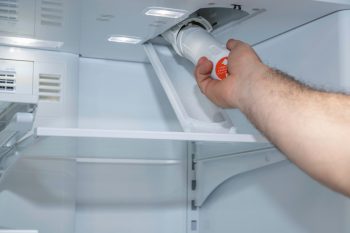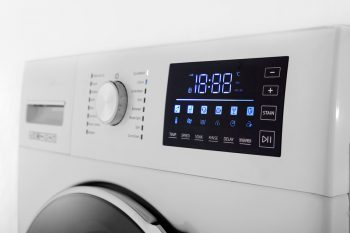
Replacing a dryer outlet may seem like a daunting task, especially if you’re not familiar with electrical work. However, with the right tools, precautions, and step-by-step instructions, it’s within the capabilities of most homeowners. In this comprehensive guide, we’ll walk you through the process, provide safety tips, and highlight common challenges and mistakes to avoid.
To replace a dryer outlet, first, turn off the power at the circuit breaker. Then, remove the old outlet and disconnect the wires. Wire the new outlet, secure it in place, then turn the power back on and test the new outlet. Always ensure you’re using the correct type of outlet (3-prong or 4-prong) and follow local electrical codes. If you’re not confident in doing this yourself, hire a licensed electrician.
Understanding Dryer Outlets
Before you start, it’s important to understand the different types of dryer outlets. The two main types are 3-prong and 4-prong outlets. A 3-prong outlet has two hot slots and one neutral slot, while a 4-prong outlet has two hot slots, one neutral slot, and one grounding slot. You can easily identify the type of outlet you have by the number of slots it has.
Signs Your Dryer Outlet Needs Replacement
There are several key signs that indicate a dryer outlet needs replacement:
- Inadequate drying
- Overheating
- Damaged cord
- Loose connections
- Tripped circuit breaker or blown fuse
If you notice any of these signs, it’s essential to have a licensed electrician inspect the outlet to determine if it needs to be replaced.
Necessary Tools and Materials
To replace a dryer outlet, you will need the following:
- New dryer outlet (3-prong or 4-prong, depending on your dryer)
- Screwdriver
- Socket wrench
- Pliers
- Wire strippers
Safety Measures
Before starting, take these safety measures:
- Turn off the power at the circuit breaker.
- Use a voltage tester to confirm there is no electricity flowing to the outlet.
- Gather all necessary tools and materials beforehand.
- Follow correct wiring guidelines.
- Consider hiring a professional if you’re not confident in your ability.
Step-by-Step Guide to Replacing a Dryer Outlet
Follow these steps to replace your dryer outlet:
- Turn off the power
- Remove the old outlet
- Disconnect the wires
- Wire the new outlet
- Secure the new outlet
- Turn the power back on
- Test the new outlet
Common Challenges and Mistakes
Here are some potential challenges and common mistakes to avoid:
- Not turning off the power
- Loose or improper connections
- Using the wrong outlet type
- Incorrect wiring
- Not checking for damage
- Overloading the outlet
- Ignoring local electrical codes
Post-Replacement Checks
After replacing the dryer outlet, here are the checks you should perform:
- Visual inspection
- Test for proper voltage
- Test for proper grounding
- Check the dryer cord
- Test the dryer
Conclusion
Replacing a dryer outlet can be a straightforward task when done correctly and safely. Always remember to turn off the power before starting, use the correct outlet type, ensure proper wiring, inspect for damage, avoid overloading, and follow local electrical codes. If you’re unsure about any step or encounter any issues, consult a licensed electrician.
Frequently Asked Questions
What is the difference between a 3-prong and a 4-prong dryer outlet?
A 3-prong outlet has two hot slots and one neutral slot, while a 4-prong outlet has two hot slots, one neutral slot, and one grounding slot. The extra grounding slot in a 4-prong outlet provides additional safety against electric shocks.
How do I know if my dryer outlet is 3-prong or 4-prong?
You can identify the type of outlet you have by the number of slots it has. A 3-prong outlet has three slots and a 4-prong outlet has four slots.
What should I do if I don’t feel confident replacing the dryer outlet myself?
If you don’t feel confident replacing the dryer outlet yourself, it’s best to hire a licensed electrician. Working with electricity can be dangerous if not done correctly.
Can I replace a 3-prong outlet with a 4-prong outlet?
Yes, you can replace a 3-prong outlet with a 4-prong outlet. However, this should be done by a professional electrician as it involves changing the wiring in your home.
How do I test for proper voltage and grounding?
You can use a multimeter to test for proper voltage and grounding. A multimeter is an instrument designed to measure electric current, voltage, and usually resistance, typically over several ranges of value.












